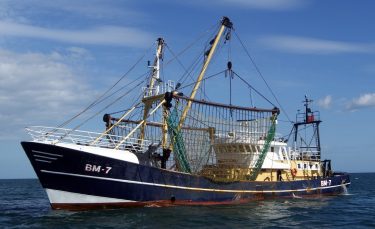
Fishing fleets around the world rely on nets towed along the bottom to capture fish. Roughly one-fifth of the fish eaten globally are caught by this method, known as bottom trawling, which has been criticized for its effects on the marine environment.
An international group has taken a close look at how different types of bottom trawling affect the seabed. It finds that all trawling is not created equal — the most benign type removes 6 percent of the animal and plant life on the seabed each time the net passes, while the most other methods remove closer to a third. UW Professor Ray Hilborn is among the main authors on the study, led by Bangor University in the U.K. and published July 17 in the Proceedings of the National Academy of Sciences.
“These findings fill an essential science gap that will inform policy and management strategies for sustainable fishing practices by enabling us to evaluate the trade-off between fish production for food, and the environmental cost of different harvesting techniques,” said Hilborn.
Read more at UW Today »
